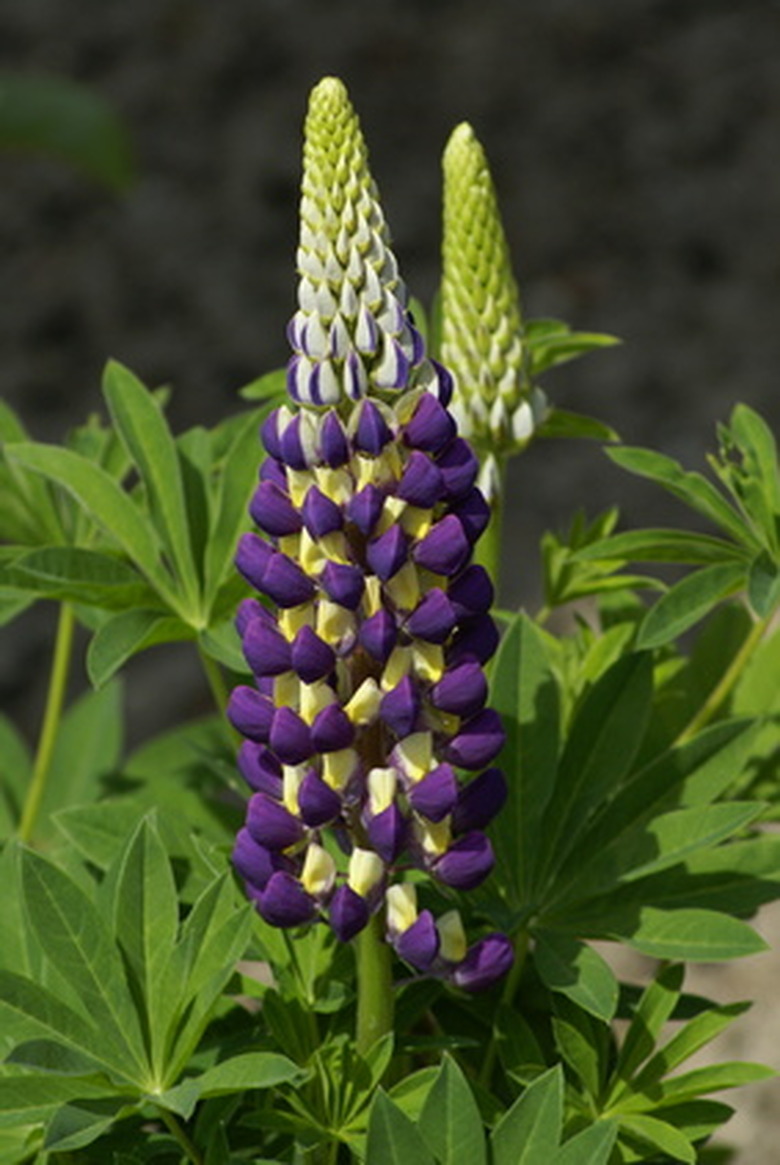Lupine Diseases
Lupine plants are popular both as garden flowers and in their native wildflower form. These plants come in blue, white, red and yellow, and their flowery spikes add interesting dimension to any garden–although you will want to prevent animals from eating them, since they can be toxic. If you are growing lupine in your garden, keep an eye on it to avert problems with a few persistent disease issues that plague this plant in nearly all areas in which it grows.
Oedema
Oedema occurs in lupines when the plant's roots malfunction and begin taking up more water than the plant can handle. As the water pressure builds, the plant develops blisters and lesions that disfigure stems, leaves and flowers with corky, warty spots. If your lupines develop oedema, try to limit your watering and control humidity. If possible, position lupines so that they will get sun on them for at least part of the day, and leave plenty of space in between the plants to ensure adequate ventilation. This should resolve the issue and help your plants overcome this problematic behavior.
- Lupine plants are popular both as garden flowers and in their native wildflower form.
- If you are growing lupine in your garden, keep an eye on it to avert problems with a few persistent disease issues that plague this plant in nearly all areas in which it grows.
Parasitic Nematodes
Nematodes are worms that infest lupines and feed on their roots as well as the interior of the plant. Symptoms of nematode infestation vary, but tend to include wilting, blotchy discoloration of leaves and eventual defoliation. If you suspect a nematode infestation, get a local professional to do a soil analysis to determine what type of worms you are dealing with. Once you have identified the culprits, replace the infected soil, fumigate it or move your lupines to another area. Lupines that have been attacked by nematodes may carry the infection with them if the worms were among the types that actually enter the tissue of the plants.
Powdery Mildew
Powdery mildew is usually a symptom of over-watering or improper watering. It looks like a dusty coating in gray, white or black on the lupine's leaves, stems or flowers. Usually you can control this fungal infection by removing the affected parts of the plant and disposing of them completely rather than letting them lie on the ground near the uninfected plants and by watering via drip-hose instead of a sprinkler. However, in some cases, you may need to use a sulfur fungicide to control the problem completely.
- Nematodes are worms that infest lupines and feed on their roots as well as the interior of the plant.
- Lupines that have been attacked by nematodes may carry the infection with them if the worms were among the types that actually enter the tissue of the plants.
